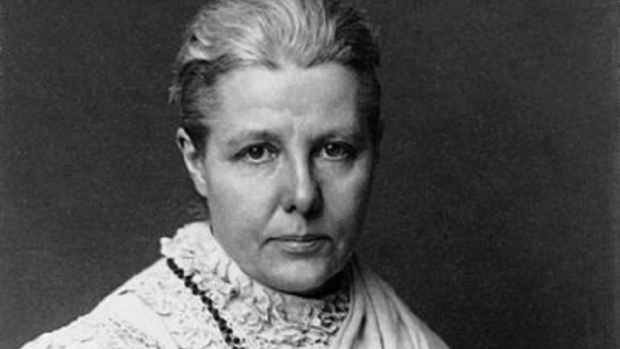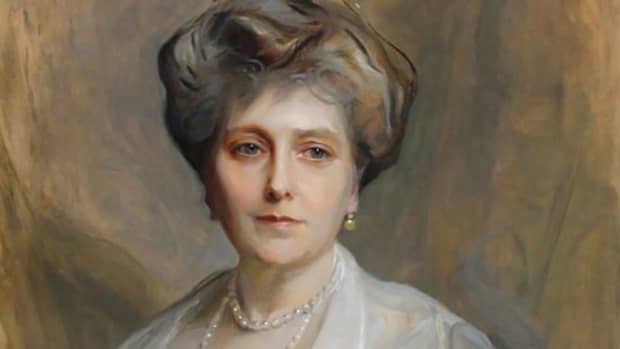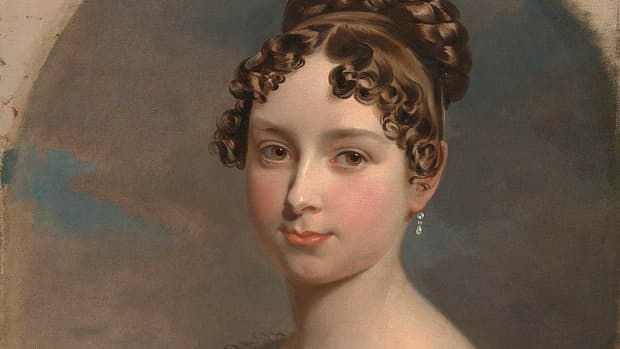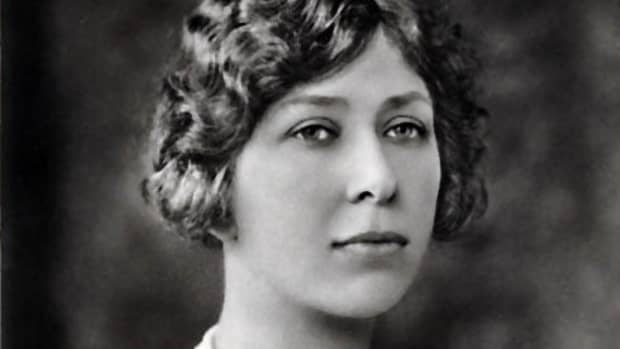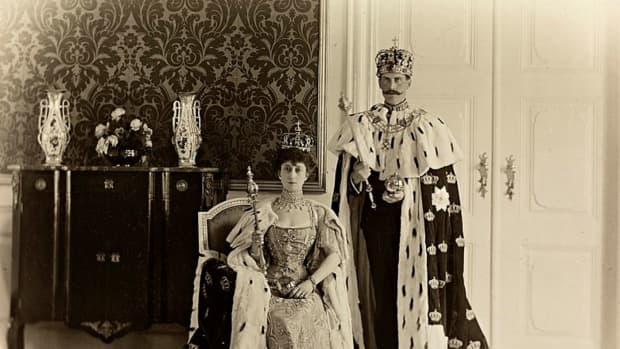Marie Louise, the “Princess of Nowhere”: Queen Victoria's Granddaughter
Princess Marie Louise of Schleswig-Holstein
Her Highness Princess Marie Louise of Schleswig-Holstein was the second daughter of Princess Helena of Great Britain (1846-1923) and Prince Christian of Schleswig-Holstein-Sondenburg-Augustenburg (1831-1917), and she was their fourth child. Born at Cumberland Lodge in Windsor Great Park on the 12th of August, 1872, Marie Louise was christened on the 18th of September, 1872. Her full name was Franziska Josepha Louise Augusta Marie Christina Helena.
Known as Louie to her family, she was raised at Cumberland Lodge approximately 3.5 miles from her grandmother Queen Victoria's Windsor Castle. She was close to her parents and her elder siblings, Prince Christian Victor and Albert and Princess Helena Victoria, known as Thora.
Schleswig-Holstein, formerly in Denmark, had been annexed by Prussia and Austria in 1864, so Prince Christian did not have lands in his home country. (The following year, Prussia fought Austria for Holstein and won.) Queen Victoria insisted that Christian and Helena live in Britain so that she always had her daughter nearby. They were referred to as Prince and Princess Christian, and their children were considered to be British royals.
The family frequently paid visits to their broad network of relations. Marie Louise was particularly close to her cousin Alix of Hesse, the future ill-fated Tsarina Alexandra of Russia (1872-1918), who was just a couple of months older than her. Marie Louise wrote that they were “more like sisters than cousins.” Prince and Princess Christian ensured that the princesses were involved in charity work and understood that not everyone was as fortunate as they were. Louie and Thora supported charities and nursing ventures throughout their lives.
Prince Aribert of Anhalt
On the 6th of July, 1891, Princess Marie Louise married Prussian soldier Prince Aribert of Anhalt (1866-1933.) They'd met at a family wedding, that of Princess Viktoria of Prussia (1866-1929) and Prince Adolf of Schaumberg-Lippe (1859-1916). Viktoria was a younger sister of Kaiser Wilhelm II (1859-1941.)
The Kaiser promoted the match between his great friend and Marie Louise, but as ever, Wilhelm showed a lack of judgment. The marriage was rumoured never to have been consummated because of Aribert’s homosexuality. He had little interest in building a life with her and prioritised his military career. The court at Dessau, Anhalt, was forbidding, and she felt unwanted there.
Although Marie Louise initially believed that she was in love with Aribert, the rot set in quickly. She was relieved that much of their time was spent in Berlin, not Anhalt so that she could socialize and find a distraction from her marriage troubles. The couple would not see one another for days at a time, even when they were in the same building.
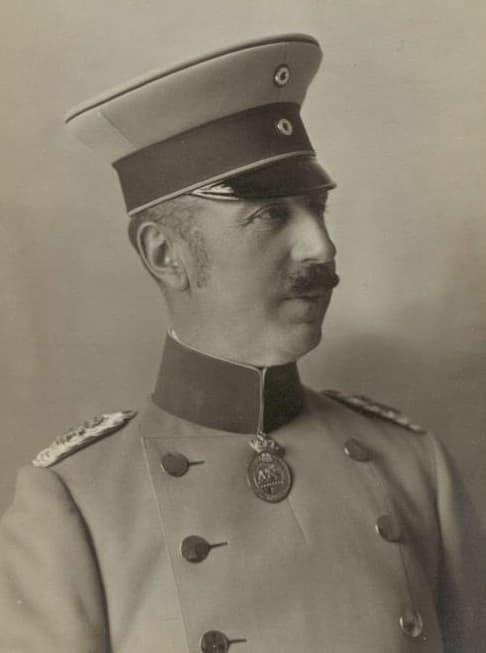
Prince Aribert of Anhalt was a far from perfect husband to Marie Louise.
Hofatelier Hoffmann/Wikipedia
1900: Shock and Scandal
She lost her thirty-three-year-old brother, Prince Christian Victor, on the 29th of October, 1900, to malaria which he contracted during the Boer War in Africa. In December of 1900, Marie Louise visited Canada.
One day, she received a cable message from her father-in-law, Friedrich I of Anhalt (1831-1904), demanding that she return to Dessau without delay. A short time later, another cable arrived; this one was from Queen Victoria. Marie Louise was told to “ ... come home to me. V.R.”
Marie Louise followed the queen’s instruction and was astounded by the news that greeted her at her parents' home, Cumberland Lodge. In her absence, Friedrich I had started proceedings for Aribert and Marie Louise’s marriage annulment, apparently at his son’s request.
In Aribert’s opinion, she made his life intolerable and neglected their marriage. He conveniently forgot to mention that he’d spent most of her money, and so he had no use for her. Around that time, there were whispers of a scandalous relationship between Aribert and a male servant, which Marie Louise did not refute or confirm.
Princess of Anhalt to Princess of Nowhere
With her grandmother’s full support, the annulment was processed quickly to minimise Marie Louise’s suffering at an age when the end of a marriage before death was potentially ruinous. She once again became Princess Marie Louise of Schleswig-Holstein.
Recommended
She remained in Britain and made a stylish home for herself in London, but because she believed that marriage was a lifetime commitment, she never married again. She wore her wedding ring for the rest of her life. She resumed her charity work, actively supported her mother’s Princess Christian Nursing Home at Windsor, and was a noted patron of the arts. Marie Louise was a popular member of the royal family and attended family events, official and private.
In 1917, the royal family’s name was changed to Windsor to halt anti-German sentiments. Marie Louise’s once Danish provinces were in enemy Germany, so she and George V agreed to remove the reference to Schleswig-Holstein in her title. Marie Louise and her unmarried sister Helena Victoria were designated “Her Highness Princess ... ” (followed by their names), but unlike their relatives, they were not awarded any geographical territory, British or Danish. They were referred to by some relatives as the princesses “of nowhere.”

Marie Louise inspired the exquisite Queen Mary's Dolls House, now at Windsor Castle.
Rob Sangster CC2.0/Wikipedia
Memories of Six Reigns
After the war ended on the 11th of November, 1918, she resided with her mother and sister at Cumberland Lodge and Schomberg House in Pall Mall, London. When Princess Helena died in 1923, her daughters took on her work. She inspired Queen Mary (1867-1953) to commission the Queen Mary’s Doll's House, which utilised the skills of British craftspeople.
She worked with them to produce the acclaimed mini-palace. Completed in 1924, the doll's house is on display at Windsor Castle today. It's so intricate: the miniature books in the library have full stories in them written by authors, including Arthur Conan Doyle.
The princess's remaining brother Prince Albert, passed away in 1931. The sisters were companions for one another and lived together until Helena Victoria passed away in 1948. Marie Louise continued to live in their home in Berkeley Square, London.
Her memoirs “My Memories of Six Reigns” were published during her final year. She recalled the reigns of Queen Victoria, her uncle Edward VII and cousins George V, Edward VIII and George VI. She witnessed the early years of Elizabeth II’s now unbeaten in-length reign. There was a story that Marie Louise went to Elizabeth’s coronation with a supply of gin and tonic to get her through the day.
Aged eighty-four, she died at her home on the 8th of December, 1956, and was buried at the Frogmore Burial Ground, Windsor, in the Schleswig-Holstein plot.
Bonus Fact
At the James Bond No Time To Die London premiere on the 28th of September, 2021, Camilla, Duchess of Cornwall, wore Marie Louise’s Sunburst brooch.
Portraits of Princess Marie Louise
For images of Princess Marie Louise throughout her life, including a set from 1879 and another dated 1953, please visit the National Portrait Gallery website.
Sources
- Princess Marie Louise of Schleswig-Holstein | Unofficial Royalty
- The Stories of Queen Victoria's Granddaughters: Princess Marie Louise of Schleswig-Holstein
Related Articles
- Queen Victoria and the Lady Flora Hastings Scandal
The Lady Flora Hastings scandal exposed Queen Victoria's personal prejudices and her poor judgment.
This content is accurate and true to the best of the author’s knowledge and is not meant to substitute for formal and individualized advice from a qualified professional.
© 2021 Joanne Hayle



